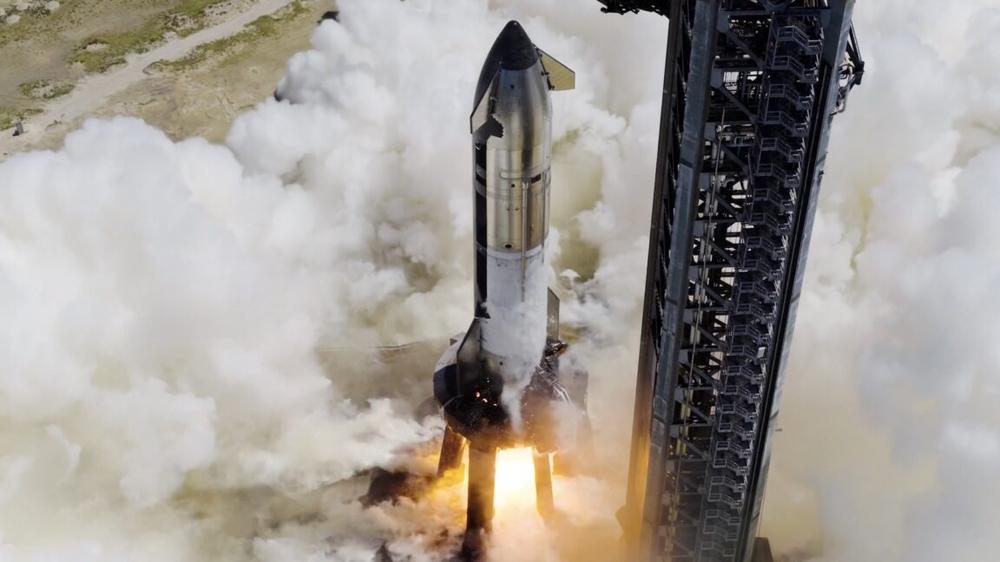On its surface, the flight plan for SpaceX's next Starship flight looks a lot like the last one.
The rocket's Super Heavy booster will again splash down in the Gulf of Mexico just offshore from SpaceX's launch site in South Texas. And Starship, the rocket's upper stage, will fly on a suborbital arc before reentering the atmosphere over the Indian Ocean for a water landing northwest of Australia.
SpaceX will again test the rocket's satellite deployer and reignite one of the ship's Raptor engines in space to adjust the vehicle's path for reentry. These demonstrations will pave the way for future Starship flights into low-Earth orbit. All of the rocket's ascents to date have, by design, ended before reaching orbital velocity.
All of this went well on the previous Starship test flight on August 26, when SpaceX rebounded from four consecutive failures—three in flight and one on the ground. With the next Starship launch, scheduled for no earlier than October 13, SpaceX officials hope to show they can repeat the successes of last month's mission.
This will be the 11th full-scale test flight of Starship, and the fifth of this year. It will also be the last Starship test flight until at least early 2026, when SpaceX will debut a larger upgraded vehicle known as Starship Version 3.
Same but different
There are, however, some changes to SpaceX's flight plan for the next Starship. Most of these changes will occur during the ship's reentry, when the vehicle's heat shield is exposed to temperatures of up to 2,600° Fahrenheit (1,430° Celsius). Like on the last Starship flight, SpaceX has removed some of the ship's thousands of ceramic thermal protection tiles to "intentionally stress-test vulnerable areas across the vehicle."
Several of the missing tiles are in areas where tiles are bonded directly to Starship's stainless steel structure, without a backup ablative layer, according to SpaceX.
In an update posted Monday to its website, SpaceX did not mention the presence of any experimental metallic tiles on the next Starship flight. Engineers installed several metallic tiles on the ship that flew in August, but they "didn't work so well," SpaceX's Bill Gerstenmaier said in a presentation earlier this month.
The ship still made an on-target splashdown in the Indian Ocean, but cameras recording the landing showed a broad area of orange discoloration on one side of the vehicle. This was due to oxidation of the metallic tiles in flight, according to Gerstenmaier.
SpaceX added the metallic tiles to see if they might hold up better than the ceramic insulators. Engineers are refining the heat shield's design to make it robust against damage during reentry and landing. Any heat shield damage would require refurbishment, risking SpaceX's goal of making Starship fully and rapidly reusable.
On a future flight, perhaps sometime next year, SpaceX will attempt to bring a Starship vehicle back to its launch site at Starbase, Texas, where it will slow down using its engines to settle into the grappling arms of the launch pad's servicing tower.
One of the new test objectives for next month's Starship flight will be a "dynamic banking maneuver" during the final phase of the trajectory "to mimic the path a ship will take on future flights returning to Starbase," SpaceX said. This will help engineers test Starship's subsonic guidance algorithms.
Another reuse
While SpaceX is still some time away from recovering and reusing Starship's upper stage, the company is preparing to take another step forward in reusing the rocket's massive Super Heavy booster. The next flight—Flight 11—will mark the second time SpaceX has reused a Super Heavy booster flown on a previous mission.
This particular booster, numbered Booster 15, launched in March and was caught by the launch tower at Starbase after returning from the edge of space. SpaceX said 24 of the 33 methane-fueled Raptor engines launching on the booster next month are "flight-proven."
Similar to the last Starship flight, the Super Heavy booster will guide itself to a splashdown off the coast of South Texas instead of returning to Starbase.
"Its primary test objective will be demonstrating a unique landing burn engine configuration planned to be used on the next-generation Super Heavy," SpaceX said.
The new booster landing sequence will initially use 13 of the rocket's 33 engines, then downshift to five engines before running just the three center engines for the final portion of the burn. The booster previously went directly from 13 engines to three engines. Using five engines for part of the landing sequence provides "additional redundancy for spontaneous engine shutdowns," according to SpaceX.
"The primary goal on the flight test is to measure the real-world vehicle dynamics as engines shut down while transitioning between the different phases," SpaceX said.
Stepping stone to Version 3
After Flight 11, SpaceX will focus on the next-generation Starship design: Starship V3. This upgraded configuration will be the version that will actually fly to orbit, allowing SpaceX to begin deploying its new fleet of larger, more powerful Starlink Internet satellites.
Starship V3 will also be used to test orbital refueling, something never before attempted between two spacecraft with cryogenic propellants. Refueling in space is required to give Starship enough energy to propel itself out of Earth's orbit to the Moon and Mars, destinations it must reach to fulfill the hopes of NASA and SpaceX founder Elon Musk.
The first flight of Starship V3 is likely to occur in early 2026, using a new launch pad undergoing final outfitting and testing a short distance away from SpaceX's original launch pad at Starbase. Gerstenmaier, SpaceX's vice president of build and flight reliability, told a crowd at a space industry conference earlier this month that the company will likely attempt one more suborbital flight with Starship V3. If that goes well, Flight 13 could launch all the way to low-Earth orbit sometime later next year.

 Google testa temi personalizzati per Chrome su Android
Google testa temi personalizzati per Chrome su Android